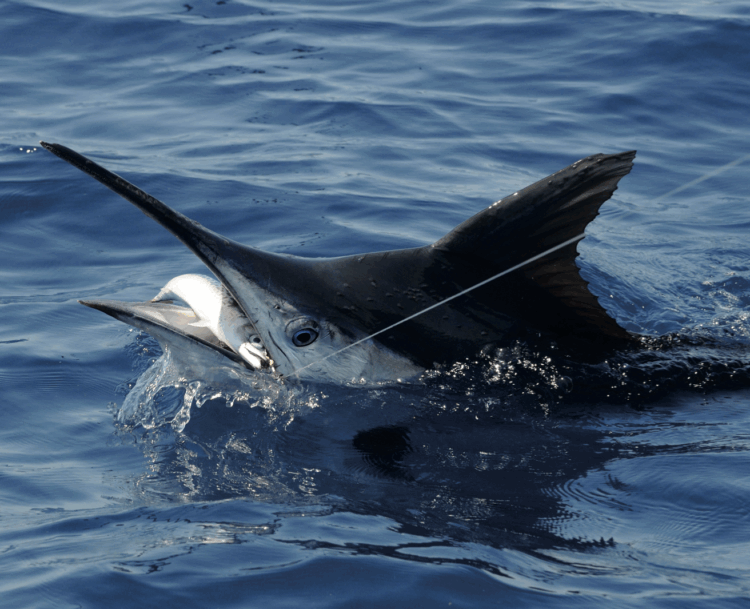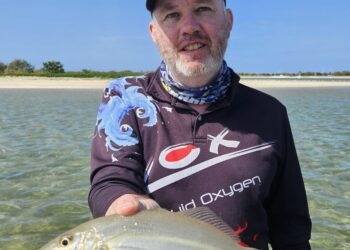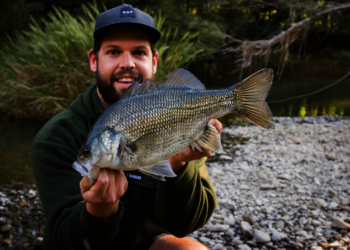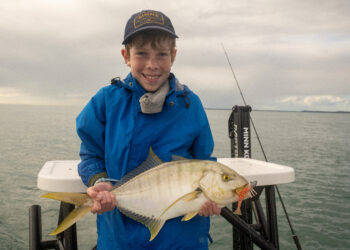WITH summer around the corner, many anglers focus their efforts on heading wide to chase gamefish. There are many different techniques and systems that you can employ when rigging up to chase a few gamefish and it’s important to also consider rules and regulations governing leader lengths and hook placement to keep in mind if you intend to fish competitions or chase records. Almost all my fishing nowadays is social with a focus on rigging that optimises practicality, success and simplicity.
TOP SHOTTING
Fishing gear in general is becoming smaller, stronger and more versatile with gear used for game fishing being no different.
Rather than using larger game reels which are heavy and quite cumbersome, smaller game reels loaded can be loaded primarily with braid and a top shot of mono. The benefits of top shotting are
many; braid is thin, strong and long lasting allowing small reels to hold large line capacities of heavy breaking strain braids. The mono top shot also provides some stretch and doesn’t twist and tangle of as much as braid whilst being easy and cost effective to replace.
The top shot length can vary in length depending on reel size but about 100m is a decent length that gives enough of a buffer to allow for multiple knots to cut and retied before being run down. I join my braid to the ono top shot with an FG knot with which is detailed below. Note that a top shot may fall awry of official game fishing rules so check the regulations if needed.
BRAID TO MONO CONNECTIONS
There are a number of braid to mono connections however one of the strongest and slimmest are the FG and PR knots. Both are friction knots formed by wrapping the braid around the mono under tension, the FG knot can be done freehand whereas the PR knot required a bobbin. The best way to learn how to tie these knot is to watch one of the many video tutorials online that demonstrate the tying process step by step. The most important thing with friction knots is ensuring the braid is under tension and keeping the wraps tight and close to one another.
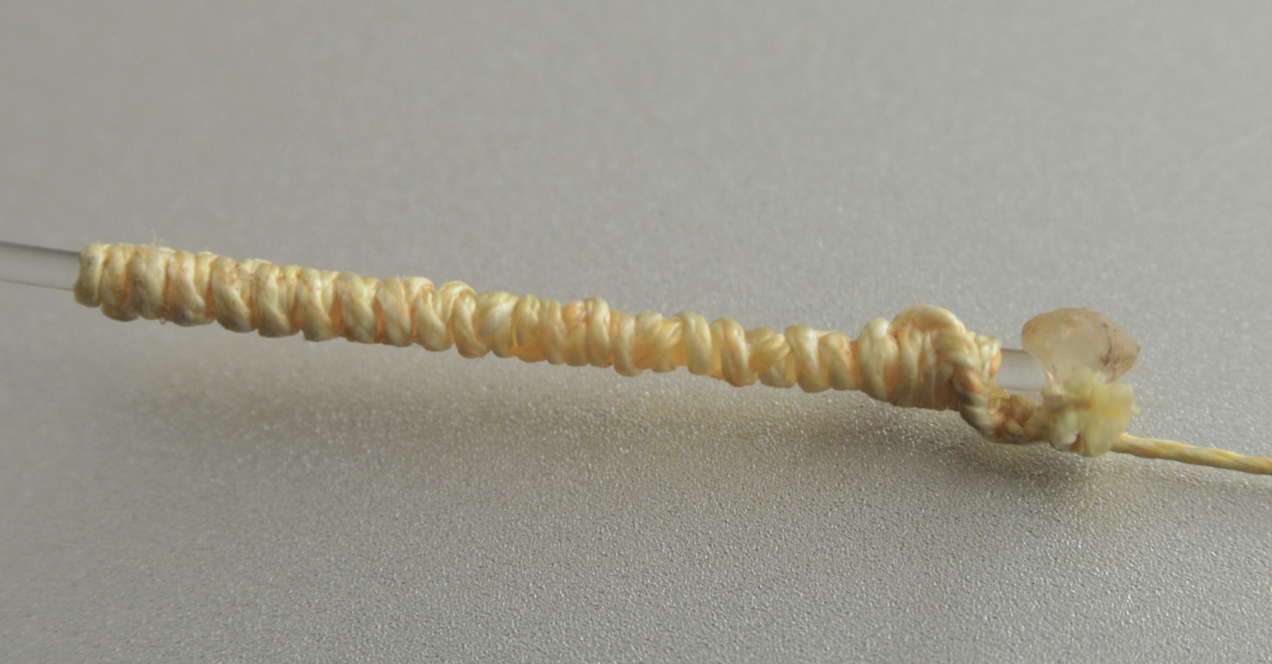
MONO DOUBLES
One of the strongest and most reliable ways to make a double in monofilament fishing line is with an Aussie plait. Again tying this knot under tension is critical to ensuring integrity of the knot. A tight and neat weave are hallmarks of a well tied plait. I usually tie my plaits anywhere from an inch to an inch and a half long. There a few ways to finish a plait, I use the method where you create a loop in the tag end and continue plaiting four or five times then pull the double through the loop. As with the FG knot, its easier to search online for a video tutorial on how to tie than to explain in writing!
CRIMPING VERSUS TYING LEADERS TO HOOKS AND SWIVELS
At a certain thickness and stiffness, leaders become difficult to tie knots in with the integrity many traditional leader to hook/swivel knots becoming compromised. I have found that to be at the 150lb mark where the knot does not seem to bed down and becomes quite cumbersome. When using most leaders up to 150lb I’ll use a four-turn unit knot. Above that I would generally opt for long aluminium crimps that allow for three crimps to secure.
When crimping, I like to start by crimping close to one edge but leaving a small amount of distance so the crimp can flare. I then flip the crimping pliers (or the crimp) 180 degrees and crimp the middle then finish by flipping the crimp 180 degrees again and crimping the end. Flipping the crimp corrects for any slight wear or bias in the crimping tool and leaves the crimp straight. It is important to ensure the ends of the crimp flare outwards to minimise the crimp edge chaffing the leader.
BRIDLE RIGS AND CIRCLE HOOKS FOR LIVE BAITING
Using a bridle rig is one of the most effective ways of rigging a live bait for game fishing for many reasons. The hook is not directly attached to the bait, causing less trauma to the bait and allowing It to swim freely. A bridle rig allows the hook to be fully exposed and free of the bait, minimising the chances of the hook otherwise embedding or tuning back onto the bait. For smaller live baits I prefer to use a size 16 elastic band as a bridle whereas for large baits I use a loop of heavy braid.
To bridle a bait you start by taking the bridle and placing it one end on the bend of the hook then you pass it around the hook and back through the loop before pulling tight. This will secure the bridle to the hook. You then slip the loop that is now attached to your hook into the open eye of a bait needle. Next step is to take your bait and pass the needle through the gap in front of the bait’s eyes and pull the loop through. You then twist the needle a few times to take up some slack and slide the loop off the bait needle and over the point of the hook.
Using circle hooks results in fewer fished hooked in the gills or stomach with the recurved hook point generally resulting in a mouth hooked fish. The trick to using circle hooks is to give the fish plenty of line once it takes the bait and then to gradually increase pressure on the line, allowing the unique design of the hook to hook to navigate its way back from being swallowed and eventually latch on to the corner of the jaw.





